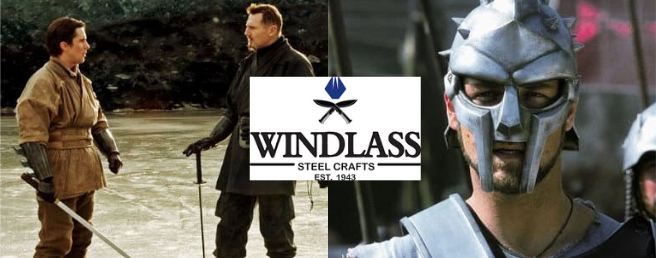Watching popular Hollywood flicks which have a cult following across the planet often ignites the interest of the audience regarding the unique props used in the movies. From Harry Potter’s invisibility cloak to suave James Bond’s knife in Skyfall to kill Raoul Silva in the final third act to Jon Snow’s outfit for the Night’s Watch to Russell Crowe wearing the ‘Helmet of Maximus’ in Gladiator – the list is endless. However, there is a unique Indian connection that ties them all. The majority of the costumes, including the swords, shields, and armour used in these motion pictures have been manufactured by an Indian company named Windlass Steelcrafts.
Windlass Steelcrafts and Khukris — the genesis
The company was founded in 1943 by Mr Ved Prakash Windlass and remains a family-owned business. Windlass currently has over 500 employees and manufacturing facilities in Dehradun (India), and warehouses and offices in Atlanta (USA).
In addition to supplying props to big Hollywood production houses, the Windlass group, also produces licensed replica armoury (again, for top-of-the-line US production houses) among other things.
However, it all started when the family patriarch Mr Ved received an order to supply ‘Khukris’ to the British Gurkha regiment before independence.
Talking about how his father didn’t know what Khukri was and yet managed to kickstart a multi-million-dollar enterprise, Pradeep Windlass in an interview to HT remarked:
“My father didn’t know what a khukri even was! He found out and decided to set up a small factory, bringing in artisans from outside the city as well. That’s where it really began,”
The expansion which opened doors to Hollywood
In 1943, Windlass Steelcrafts was officially registered as a firm and even after Independence, it kept supplying to the British Gorkhas in Singapore and Malaysia. Soon, the company expanded its presence in Indonesia and Singapore due to the presence of the British Empire and during the 70s began the supplier to US Marine Corps.
Even today, the company claims that it works with governments on six continents, providing military supplies such as kukris, combat knives, dress sabres, personal regalia, and army-grade textiles.
Such was the craftsmanship of the Khukris and swords that soon Windlass became a sought-out name in the West and Hollywood production houses came knocking at the door.
Pradeep proudly remarks, “We gave 800 swords to HBO’s Rome, the knife James Bond throws at the end in Skyfall was ours, we gave some props to The Tudors as well. Remember the sword Liam Neeson had in Batman Begins? That was ours too,”
Some other notable productions include Buffy the Vampire Slayer, HBO’s Rome, Batman Begins, Pirates of the Caribbean (2 & 3), V for Vendetta, Chronicles of Narnia: Prince Caspian, Quantum of Solace, Vampire Diaries, and True Blood among others.
Windlass –sustaining itself through a changing landscape
One of the reasons why Windlass has been able to sustain itself and make itself relevant throughout the decades is the sharp business tactics of the family-run group.
Reportedly, the family has now taken to the ‘licensing’ business instead of exporting material. With the advent of CGI (Computer Generated Imagery), the entire showbusiness has been reduced to actors enacting their lines in front of the green screens with imaginary props in their hands.
However, Pradeep remarks that the licensing business is much more lucrative than the exporting business. He states, “People confuse the two, which is why the distinction must be made. Props are obviously popular, but licensing is more profitable. Which is why in recent times we hardly take on projects that require us to export props only,”
He says that these days production houses ask for a very low number of props and use CGI to complete the whole look. “300 is the perfect example! Almost the whole thing was CGI, they hardly used any props! The same goes for most films these days.”
Cultural impact of Windlass
The cultural impact of Windlass can be gauged by the fact that the clothes and props manufactured by them become the collector’s item and millions across the world try to ape them. The Comic cons where cosplay is an integral part of the urban folklore – the comic book and movie franchise fanatics throng in large numbers wearing the exact same costumes and outfits with the props to show their undying fidelity for the movies.
According to the report published by Allied Market Research, the global cosplay costumes market was estimated at $4.62 billion in 2020 and is expected to hit $23 billion by 2030, registering a CAGR of 17.4 percent from 2021 to 2030.
The potential is limitless. And the best part for Windlass is that India, its parent country is yet to unlock the cosplay market. The IP laws are still pretty lax in a country like India and its one of the reasons why Windlass has been apprehensive of taking the plunge to distribute the licensed replicas. However, with the burgeoning appetite of the Indian viewers, it’s a market that is there for the taking and Windlass appears to be the biggest player to take on it.
